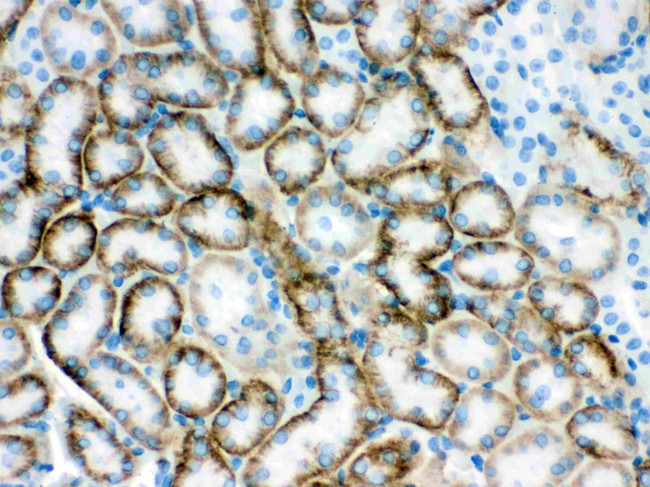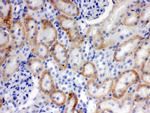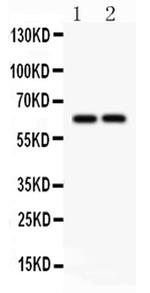Search Thermo Fisher Scientific
产品信息
PA5-80015
种属反应
已发表种属
宿主/亚型
分类
类型
抗原
偶联物
形式
浓度
纯化类型
保存液
内含物
保存条件
运输条件
RRID
产品详细信息
Reconstitute with 0.2 mL of distilled water to yield a concentration of 500 µg/mL.
靶标信息
Organic cation transporters (OCT) are expressed in the plasma membrane of epithelial cells from a wide range of tissues, where they function in the elimination of endogenous amines, cationic drugs and other xenobiotics. The structure of OCTs consists of a 12-transmembrane-domain structure and a large extracellular hydrophilic loop. In humans, OCT1 is primarily expressed in the liver, while OCT2 is expressed in the kidney. OCT3 is expressed in the placenta, skeletal muscle, prostate, aorta and liver. OCT2, also known as SLC22A2, is a multi-specific transporter protein localizing to the basolateral and luminal membranes of the kidney distal tubule and proximal tubules. OCT2 is responsible for mediating the pH-sensitive tubular uptake of organic compounds from circulation. An additional splice variant exists for OCT2, namely OCT2-A.
仅用于科研。不用于诊断过程。未经明确授权不得转售。
生物信息学
蛋白别名: 2-Oct; hOCT2; mOCT2; Organic cation transporter 2; rOCT2; solute carrier family 22 (organic cation transporter), member 2; Solute carrier family 22 member 2; solute carrier family 22, member 2
基因别名: OCT2; OCT2r; Orct2; rOCT2; SLC22A2
UniProt ID: (Human) O15244, (Rat) Q9R0W2, (Mouse) O70577
Entrez Gene ID: (Human) 6582, (Rat) 29503, (Mouse) 20518






